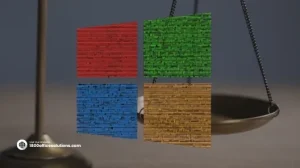How Do U.S. Tariffs in 2025 Affect Your AV Installation Costs?
New U.S. tariffs in 2025 are reshaping how much it costs to design and install professional AV systems. Import duties on materials and finished products have pushed prices higher, making projects more expensive and less flexible. The direct impact is that AV equipment costhas risen by as much as 25%, and those increases often flow straight into installation budgets.These changes affect both large-scale commercial integrations and smaller upgrades. Project timelines may stretch as companies adjust sourcing strategies or wait for tariff-exempt shipments. Even with new exemptions available, navigating the rules requires careful planning to avoid unexpected expenses.For anyone managing an installation this year, understanding how tariffs influence pricing and supply is essential. Knowing what drives the added costs helps set realistic budgets and identify opportunities to minimize the impact.
Key Takeaways
- Tariffs in 2025 directly increase AV installation costs
- Rising expenses affect both project budgets and timelines
- Careful planning helps reduce the financial impact
Direct Impact of 2025 U.S. Tariffs on AV Installation Costs
Tariffs introduced in 2025 have added new layers of cost and complexity to AV projects. These changes affect the price of imported equipment, the speed of delivery, and how much of the expense is ultimately passed on to the end user.
Increased Prices of Imported AV Equipment
Many AV products rely on components manufactured overseas, especially displays, LED walls, and network-based AV gear. With tariffs now adding up to 25% on certain imports, integrators are paying significantly more for the same equipment.This increase is not limited to finished products. Raw materials like steel and aluminum, which are used in racks, mounts, and structural components, also carry higher costs. As a result, even U.S.-assembled systems face indirect price hikes. The higher costs make budgeting more difficult for integrators and clients. A project that once fit neatly within a set budget may now require either scaled-back equipment or additional funding.Key cost drivers include:
- 25% tariffs on steel and aluminum imports
- Double-digit increases on finished AV goods
- Higher shipping and customs fees linked to tariff rules
Changes in Availability and Lead Times
Tariffs have disrupted supply chains by reducing the flow of certain AV products into the U.S. Importers are ordering less inventory due to higher costs, which reduces availability for integrators. For products like large-format displays or specialty processors, longer lead times are now common. Delays of several weeks or even months can affect project schedules, especially for commercial installations with strict deadlines.Some manufacturers are seeking tariff exemptions or shifting production to other countries. While this may help in the long term, the transition period creates uncertainty and uneven product availability. Project planners now need to account for possible delays when scheduling installations. This often means ordering equipment earlier or choosing alternative brands that can deliver faster.
Navigating AV Installation in a Tariff-Driven Market
Higher import duties in 2025 have raised the cost of many AV products, while shifting supply chains have introduced new challenges. Companies must balance tighter budgets with the need for reliable equipment and timely project delivery.
Strategies for Cost Management
AV integrators now face equipment quotes that change quickly due to tariff-driven price fluctuations. Many vendors only guarantee pricing for short periods, forcing buyers to act faster or risk higher costs. One effective approach is to lock in pricing early when planning large projects. This reduces exposure to sudden increases and helps maintain budget predictability. Bulk purchasing of frequently used components, such as displays or cabling, can also provide savings.Another option is to explore tariff exemptions. Certain Pro AV products, including LED walls and AV-over-IP gear, may qualify under updated U.S. trade rules. Identifying these categories can reduce overall project costs without compromising on quality. Integrators also benefit from building transparent cost structures into client proposals. By showing how tariffs affect pricing, they can set realistic expectations and reduce disputes when adjustments become necessary.
Shifts in Sourcing and Supplier Choices
Tariff changes have encouraged many AV firms to reconsider where they source equipment. Some manufacturers have shifted production away from China to countries with lower trade penalties, creating new supply options. Distributors are also diversifying their inventories to include more tariff-exempt products. This provides integrators with alternatives, but it requires careful evaluation of product compatibility and long-term support.Regional suppliers have become more attractive for certain categories, especially when they can reduce shipping delays. While not always cheaper, these sources help avoid the uncertainty tied to international tariffs and port congestion. Evaluating suppliers now involves more than price. Reliability, lead times, and exemption eligibility play a larger role in purchasing decisions, shaping how integrators build resilient supply chains for AV installations.
Adapting to 2025 Tariff-Driven AV Installation Cost HikesConclusion
Tariffs in 2025 increase the cost of imported AV equipment, making projects more expensive for both integrators and end users. Items such as LED displays, projectors, and processors face higher price tags due to added import duties. In short, rising tariffs reshape AV project planning by raising budgets, slowing schedules, and limiting flexibility. Careful preparation and realistic cost expectations help organizations adapt to these changes.











